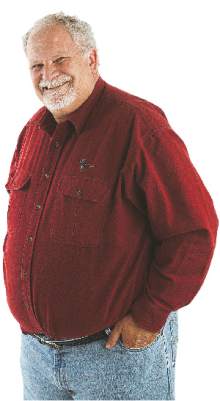This is an archived article that was published on sltrib.com in 2015, and information in the article may be outdated. It is provided only for personal research purposes and may not be reprinted.
The universality of the national park experience hit home many years ago at an overlook on the North Rim of the Grand Canyon.
Visitors from all over the world spoke in numerous languages, snapped photos and looked at the vastness in amazement.
Thinking about that moment and similar experiences in my personal visits to 42 of the 58 national parks and dozens more monuments and historic sites, I found a 1983 quote from Wallace Stegner that epitomized what I was feeling.
"National parks are the best idea we ever had," he wrote. "Absolutely American, absolutely democratic, they reflect us at our best rather than our worst."
But was Stegner correct?
This week marks the start of the National Park Service's centennial year, a celebration that promises a few memorable moments and more than a bit of hype.
Excuse the cynicism, but as someone who has enjoyed magical experiences at parks as diverse as the Everglades, Yellowstone, Canyonlands and Hawaii Volcanoes, I fear that many of our parks are slowly losing their sense of wonder.
Edward Abbey, another iconic nature writer, penned these words as he contemplated the building of a road into what was then Arches National Monument in the 1960s:
"Industrial tourism is a threat to the national parks," he wrote in Desert Solitaire. "But the chief victims of the system are the motorized tourists. They are being robbed and robbing themselves. So long as they are unwilling to crawl out of their cars, they will not discover the treasures of the national parks and will never escape the stress and turmoil of the urban-suburban complexes which they had hoped, presumably, to leave behind for awhile."
These days, even if a visitor can find a place to park at a trailhead, finding solitude is all but impossible.
The Utah Office of Tourism touts the success of its "Mighty Five" campaign that has helped spur record or near-record visitation at Arches, Bryce, Canyonlands, Capitol Reef and Zion in 2015, its leaders certain in their conviction that bringing in more visitors means more money in local coffers and is a great benefit to our state.
But is it possible to have too much of a good thing?
Consider the traffic jams near the entrance to Arches last Memorial Day weekend when the park facilities could no longer handle the hordes. On a summer trip through Zion, I left shocked at parking lot full signs and lines of parked cars in Springdale.
The wonders of a quiet moment at the Emerald Pools, the loneliness of a starlit winter evening at the Delicate Arch, a frigid snowy night huddled in a tiny tent at the Maze in Canyonlands or a remote trek in Capitol Reef can still be found. But it takes work, the willingness to visit in the off, off season and more than a little luck.
Even if you are willing or able to hike long distances, can majestic scenes bereft of hordes of tourists be discovered on a regular basis? There is a reason that often hard to obtain permits are required for backcountry adventures far from the maddening crowds.
As more people discover the parks, our leaders seem more interested in turning them into cash cows than actually investing in needed infrastructure and staff to preserve places being loved to death.
Let us use the centennial of the National Park Service as both a time to reflect on what some have called America's best idea but also to engage in a serious discussion on how the quality of these special places should be preserved and whether parks needed to be expanded and new ones added to the system.
The sad reality is that my grandkids are experiencing the parks in a much different way than my children saw them. Perhaps the national parks do reflect our democracy these days by serving us up overhyped platitudes instead of genuine outdoor experiences that truly lift our spirits.
Tom Wharton is in his 46th year as a reporter for the Salt Lake Tribune, where he has written about the outdoors for 40 years.



